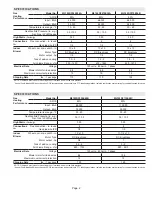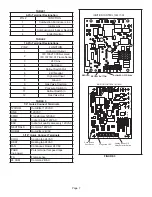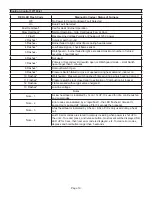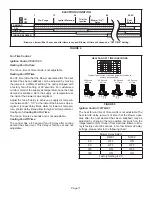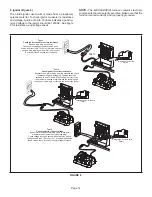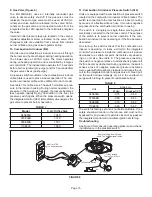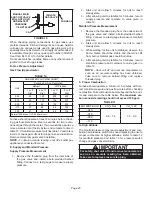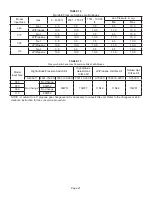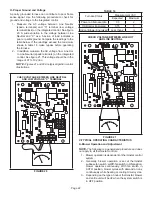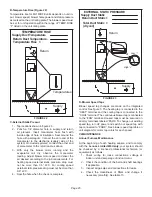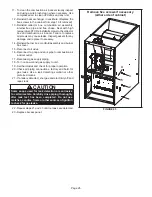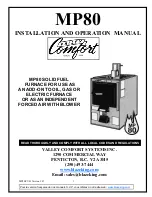
Page 12
BURNER ASSEMBLY REMOVAL
gasket
collector box
orifice plate
internal flue pipe
pressure switch
combustion air inducer
burners
manifold and gas valve
retention rings
cross over
gasket
collector box
orifice plate
internal flue pipe
pressure switch
combustion air inducer
burners
manifold and gas valve
flue chase
gasket
ignitor
rollout switch
sensor
FIGURE 6
5. Flame Rollout Switches (Figure 6)
Flame rollout switch (S47) is a high temperature limit.
Each furnace is equipped with two identical switches. The
limit is a N.C. SPST manual-reset limit connected in series
with the integrated control A92. When S47 senses rollout,
the integrated control immediately stops ignition and clos
-
es the gas valve. If unit is running and flame rollout is de
-
tected, the gas valve will close and integrated control will
be disabled. Rollout can be caused by a blocked heat ex
-
changer, blocked flue or lack of combustion air. The switch
has a factory setpoint of 210°F and cannot be adjusted.
To manually reset a tripped switch, push the reset button
located on the control.
6. Primary Limit Control
The primary limit on is located in the heating vestibule
panel under the combustion air inducer. See figure 1.
When excess heat is sensed in the heat exchanger, the
limit will open. If the limit is open, the integrated control
energizes the supply air blower and closes the gas valve.
The limit automatically resets when unit temperature re
-
turns to normal.
The switch must reset within three minutes or SureLight
®
control will go into Watchguard for one hour. The switch is
factory set and cannot be adjusted. The switch may have
a different setpoint for each unit model number. If limit
switch must be replaced, refer to Lennox ProductZone re
-
pair parts list.
7. Flame Sensor (Figure 6)
A flame sensor is located on the left side of the burn
-
er support. The sensor is mounted on the flame rollout
plate and the tip protrudes into the flame envelope of the
left-most burner. The sensor can be removed for service
(clean with steel wool) without removing any part of the
burners. During operation, flame is sensed by current
passed through the flame and sensing electrode. The inte
-
grated control allows the gas valve to remain open as long
as flame signal is sensed.
A microamp DC meter is needed to check the flame signal
on the integrated control
Flame (microamp) signal is an electrical current which
passes from the integrated control to the sensor during
unit operation. Current passes from the sensor through the
flame to ground to complete a safety circuit.
To Measure Flame Signal - Integrated Control:
Use a digital readout meter capable of reading DC micro
-
amps. See figure 8 and table 6 for flame signal check.
1 -
Set the meter to the DC amps scale.
2 - Turn off supply voltage to control.
3 - 3 - Remove sensor wire from integrated control.
4 - Connect (-) lead to flame sensor wire.
5 - Connect (+) lead to Terminal FS on integrated
control.
6 - Turn supply voltage on and close thermostat
contacts to cycle system.
7 - When main burners are in operation for two minutes,
take reading.
TABLE 6
Flame Signal in Microamps
Normal
Low
Drop Out
1.5 or greater
0.5 - 1.4
0.4 or less


